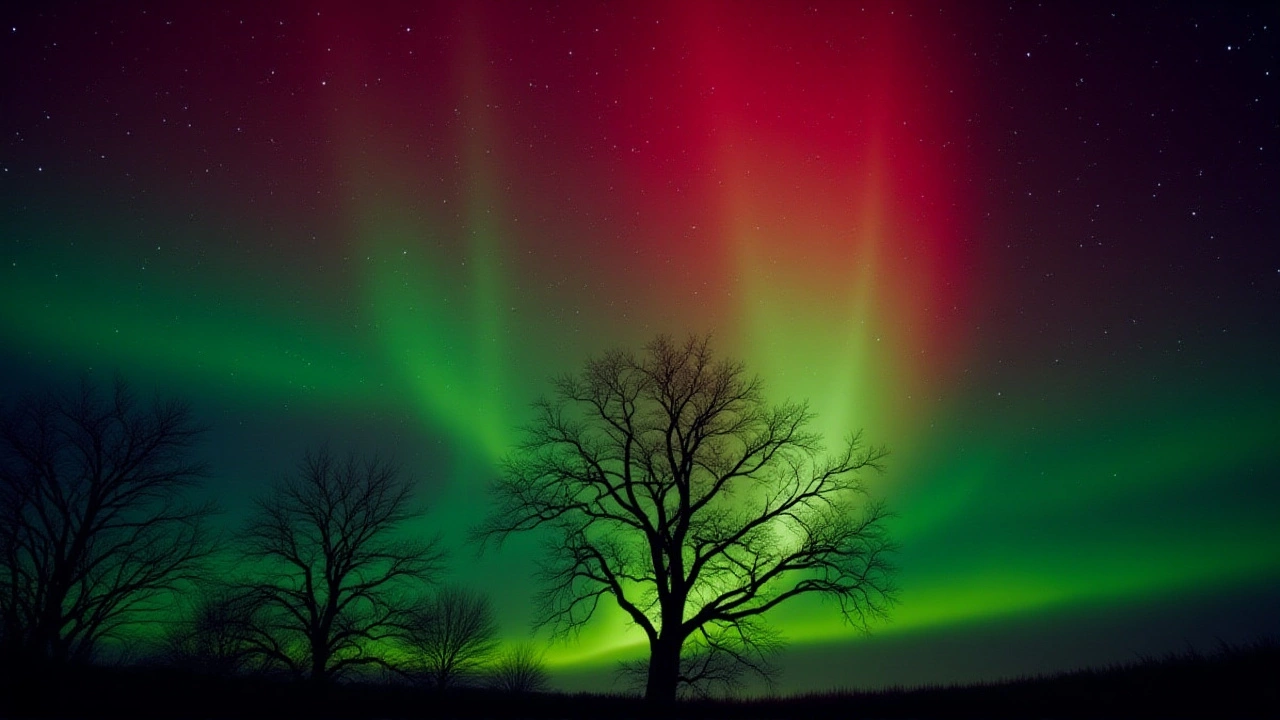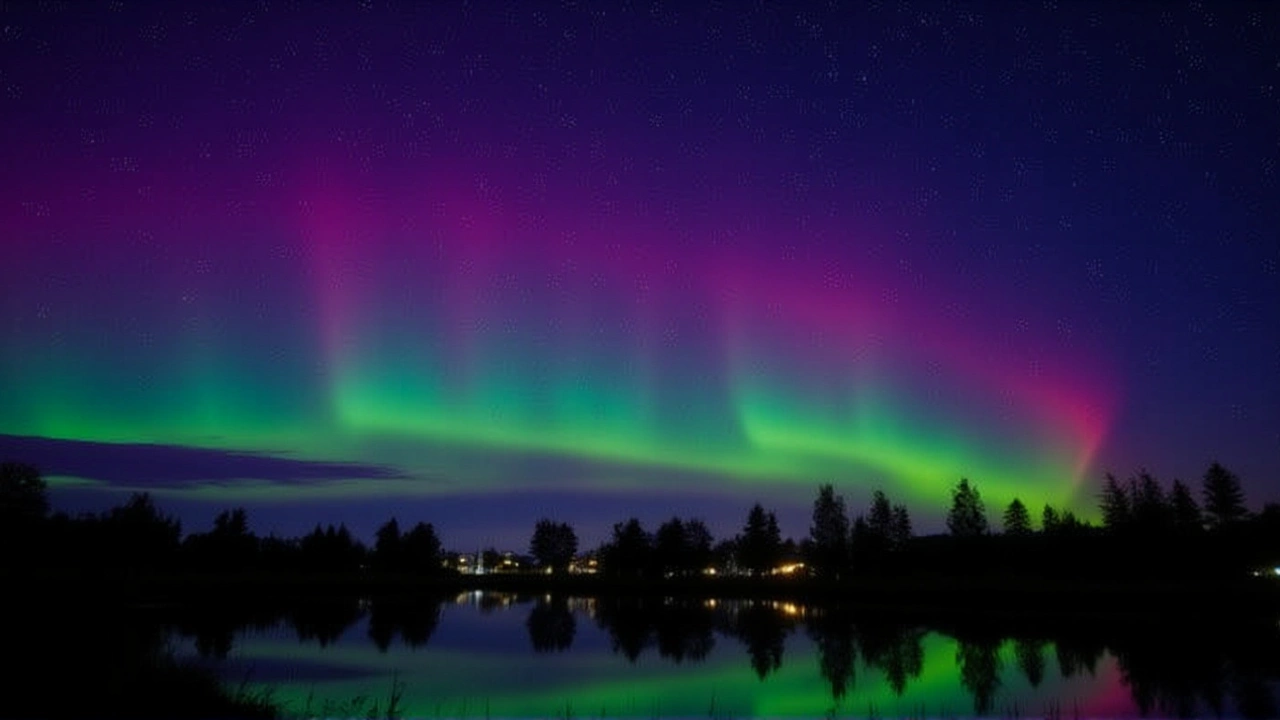NOAA Warns of G3 Geomagnetic Storm Lighting Up Northern Lights Across US & Canada
 Oct, 3 2025
Oct, 3 2025
When NOAA's Space Weather Prediction Center announced a G3‑level geomagnetic storm for October 1‑2 2025, skywatchers from the northern United States to Canada scrambled for their blankets and cameras. The storm, driven by a burst of solar wind, is sending charged particles toward Earth's magnetosphere, sparking vivid aurora displays that can be seen from as far south as Minnesota and southern Ontario. The G3 geomagnetic storm began early on October 1, and the NOAA Space Weather Prediction Center is feeding real‑time data to its experimental Aurora Viewline system, which maps where the lights will likely shimmer between 6 PM and 6 AM Central Time.
Why this storm matters
Most Americans associate the aurora with Alaska or the far north of Canada. This week, the lights are moving into the "lower 48" – a rarity that turns a typical Friday night into a public spectacle. The Kp index, a scale from 0 to 9 that quantifies geomagnetic activity, has been hovering between 2.33 (quiet) and 3.67 (active) throughout the evenings, according to Soft Serve News. When the Kp climbs above 3, the oval of green light expands, sometimes turning a deep red at the edges, making the show visible up to 1,000 kilometers from the magnetic pole.
How the Aurora Viewline works
The Aurora Viewline product plugs into NOAA’s long‑standing OVATION model, which calculates particle precipitation based on satellite observations. Every few minutes the system updates a map that shows the predicted intensity, color shift, and the time window when the lights will be above the horizon. The forecast is anchored to the Kp values projected for the 6 PM–6 AM window, and it flips from "tonight" to "tomorrow night" at 12:00 Z (roughly 7 AM Central Time), a quirk that can confuse casual users but ensures the model stays synchronized with the Earth's rotation.
Expert reaction
"We’ve seen a handful of G3 storms this solar cycle, but the timing aligns perfectly with clear autumn skies over the Midwest," said Dr. Sarah Whitaker, senior space‑weather scientist at NOAA SWPC. "The key for observers is to watch the forecast around local sunset and be ready for sudden sub‑storms that can make the lights flicker on and off in seconds. Patience pays off, especially when the OVATION model predicts a red shift – that usually means a brief surge in particle energy."
What observers need to know
- Best viewing times: between 9 PM and 2 AM local time, when the sky is darkest.
- Ideal locations: open horizons north of the 45° latitude line – think Duluth, MN; Marquette, MI; and the northern tip of New York’s Adirondacks.
- Weather check: low cloud cover and minimal light pollution dramatically improve chances.
- Safety tip: avoid looking directly at the sun during daylight hours; the aurora is invisible then.
Broader impact
Beyond the visual feast, geomagnetic storms can affect radio communications, GPS accuracy, and even power grids if they intensify. The current G3 event is modest compared with historic Carrington‑type storms, but engineers monitor it closely. In the tech sector, satellite operators may adjust orbital parameters to mitigate drag caused by increased atmospheric heating.
What’s next?
The NOAA SWPC expects the Kp index to dip back toward quiet levels by the morning of October 3, as the solar wind stream weakens. However, a second high‑speed stream is projected to arrive later in the week, potentially pushing the Kp into the 4‑5 range, which would trigger even brighter displays. Residents are encouraged to keep an eye on the Aurora Viewline dashboard for updates.
Historical backdrop
The Aurora Viewline service debuted in 2022, building on NOAA’s earlier 30‑minute aurora forecasts. Since then, it has helped thousands of amateur astronomers plan outings, and it even inspired community events – a recent “Aurora Picnic” in Winnipeg drew over 300 participants. Historically, G3 storms occur roughly once a month during solar maximum years; the current solar cycle, 25, entered its peak in early 2025, explaining the uptick in activity.

Frequently Asked Questions
How far south can the aurora be seen during this storm?
For a Kp of 3‑4, the aurora oval stretches to about 45° latitude, meaning places like northern Minnesota, Wisconsin’s Door Peninsula, and the Upper Peninsula of Michigan can catch a glimpse, especially if the sky is clear.
What causes the green-to-red colour change in the aurora?
Green light comes from oxygen atoms about 100 km up, while red appears when higher‑altitude oxygen (around 200‑300 km) is excited during stronger particle precipitation. The shift indicates a brief surge in storm intensity.
Do geomagnetic storms affect everyday technology?
Yes. Even a G3 storm can introduce radio fuzz, degrade GPS signals for a few minutes, and increase drag on low‑orbit satellites, prompting operators to perform minor adjustments.
Where can I find real‑time aurora forecasts?
The NOAA Space Weather Prediction Center hosts the Aurora Viewline map. It updates every few minutes with Kp‑based predictions for North America.
What should I bring for a night of aurora hunting?
Warm layers, a reliable flashlight with a red filter, a tripod for your camera, and a portable power bank. Checking the local weather forecast and bringing a low‑light snack can make the experience far more enjoyable.